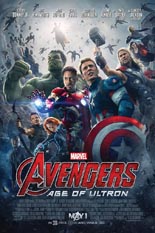
 Avengers, assemble! For the inevitable, super-sized sequel, of course: Avengers: Age of Ultron. The 2012 original, Marvel’s The Avengers, burst into the world box office’s rarified billion-dollar club, so what one critic in Bumfuck, Flyover State, thinks about this follow-up matters not at all.
Avengers, assemble! For the inevitable, super-sized sequel, of course: Avengers: Age of Ultron. The 2012 original, Marvel’s The Avengers, burst into the world box office’s rarified billion-dollar club, so what one critic in Bumfuck, Flyover State, thinks about this follow-up matters not at all.
That said, in case you’re curious, I found Age of Ultron to be more satisfying than its big brother. Much more.
Like Iron Man 3, however, footing is found only after the shakiest of starts. Here, it’s a real show-off sequence of all six of Earth’s mightiest heroes fending off enemy soldiers. Although made to look like an unbroken tracking shot, it’s so obviously and overly computer-generated that it appears like a cartoon. Downshifting to slow motion to draw even more attention to itself, one angle in particular all but reaches from the screen to give fanboys a quick, collective wank (à la See You Next Wednesday’s “Feel-Around” experience).
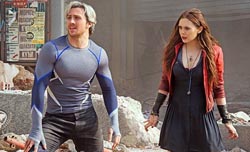 Subsequent skirmishes — and Age of Ultron has many — are staged better. The screenplay, by returning director Joss Whedon, threatens our Avengers team from within after Iron Man alter ego Tony Stark (Robert Downey Jr. in his sixth go-round with the character) covertly completes Ultron, an artificial-intelligence project intended for global defense. However, the AI (voiced by James Spader of TV’s The Blacklist at his most Spadery, which is to say terrific) decides, as it boots to life, that it doesn’t like what it’s been programmed to do, so it zigs instead of zags, thereby aiming to annihilate mankind. Even in a movie predicated upon our suspended disbelief in green giants and thunder gods and unfrozen American army men, Ultron’s insufficiently explained 180 is a completely stupid plot-starter. To call it otherwise is to deny the elephant in the room, even after the stench of pachyderm poo has grown overwhelming.
Subsequent skirmishes — and Age of Ultron has many — are staged better. The screenplay, by returning director Joss Whedon, threatens our Avengers team from within after Iron Man alter ego Tony Stark (Robert Downey Jr. in his sixth go-round with the character) covertly completes Ultron, an artificial-intelligence project intended for global defense. However, the AI (voiced by James Spader of TV’s The Blacklist at his most Spadery, which is to say terrific) decides, as it boots to life, that it doesn’t like what it’s been programmed to do, so it zigs instead of zags, thereby aiming to annihilate mankind. Even in a movie predicated upon our suspended disbelief in green giants and thunder gods and unfrozen American army men, Ultron’s insufficiently explained 180 is a completely stupid plot-starter. To call it otherwise is to deny the elephant in the room, even after the stench of pachyderm poo has grown overwhelming.
Forgive — but do not forget, because it’s poor and lazy writing, period — and let the sci-fi spectacle act its Age, because Whedon was able to right some of the predecessor’s wrongs. This sophomore outing sports a livelier, more interesting villain and better utilizes each major player without having the superhero soufflé feel overstuffed. That in itself is a Hulk-sized accomplishment, given that rather than trim the roster, Whedon expanded it to include many more. He’s roped in do-gooders from connected Marvel movies and added a few newcomers, notably Scarlet Witch and Quicksilver, evil twins played by 2014’s Godzilla couple Elizabeth Olsen and Aaron Taylor-Johnson. Of the original teammates, Black Widow (Scarlett Johansson) and Hawkeye (Jeremy Renner) benefit most from the widened scope.
This Avengers adventure still has troubles — too many quips, too many in-joke nudges, too much Cobie Smulders — yet achieves what the first film could not for me: engagement and excitement. —Rod Lott

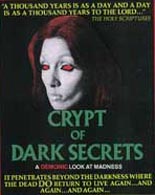
 It takes a bit for Jack Weis’
It takes a bit for Jack Weis’ 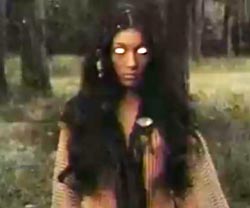
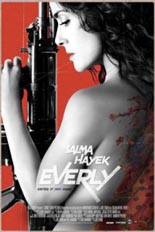
 What, if anything, does the title
What, if anything, does the title 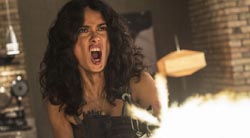
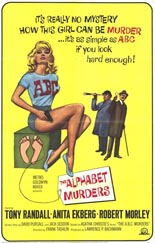
 Blake Edwards’
Blake Edwards’ 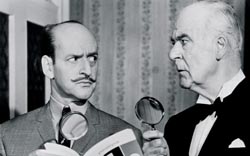

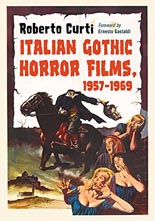
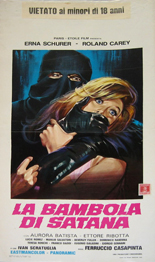 Naturally, the more iconic and influential the film, the more Curti has to say about it; for example, I think nothing eclipses Mario Bava’s
Naturally, the more iconic and influential the film, the more Curti has to say about it; for example, I think nothing eclipses Mario Bava’s